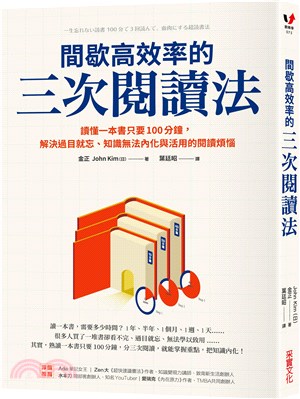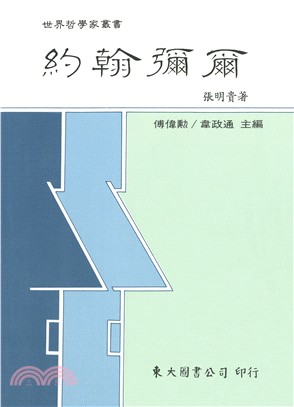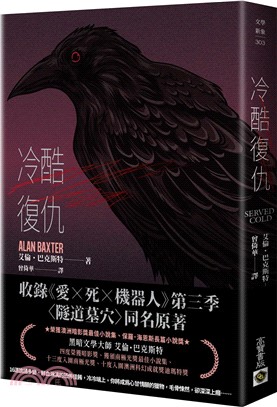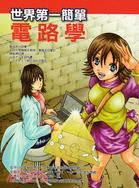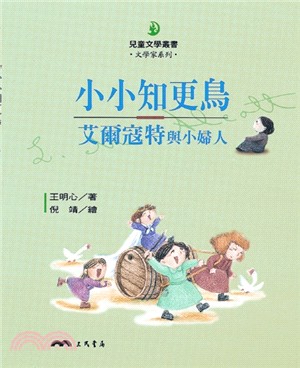Taiwan and Vietnam:language,literacy and nationalism
- ISBN13:9789869888707
- 出版社:亞細亞國際傳播
- 作者:Wi-vun T. Chiung(Tưởng Vi Văn)
- 裝訂/頁數:精裝/280頁
- 規格:26.7cm*19.3cm*2cm (高/寬/厚)
- 出版日:2020/09/01
定 價:NT$ 680 元
優惠價:90 折 612 元
領券後再享88折
領
團購優惠券A
8本以上且滿1500元
再享89折,單本省下67元
再享89折,單本省下67元
領
無庫存,下單後進貨(採購期約4~10個工作天)
可得紅利積點:18 點
相關商品
商品簡介
作者簡介
名人/編輯推薦
序
目次
書摘/試閱
商品簡介
This book “Taiwan and Vietnam: Language, Literacy and Nationalism” in English is an overall survey of Vietnam and Taiwan from a perspective of comparative studies. In addition, this book also introduces and compares the history of language, orthography and literature in the Hanji cultural sphere, such as Vietnam, Taiwan, Korea and Japan. This book can be considered one of the rare publications introducing the history of language and literature of Taiwan to Vietnamese readers.
作者簡介
The author Wi-vun CHIUNG is a Taiwanese researcher with many in-depth research results about Vietnam in the fields of language, culture and history. With over 20 years of research on Vietnam, professor Chiung has great contributions to introducing Vietnam to Taiwanese readers. In particular, his former book entitled “Vietnamese Spirit: Language, Orthography and Anti-hegemony” published in Taiwanese and Chinese provide readers a comprehensive understanding of Vietnam.
名人/編輯推薦
【推薦序】
Dr. NGUYỄN Văn Hiệp
Director, Institute of Linguistics
Vietnamese Academy of Social Sciences, VIETNAM
This book of professor Wi-vun CHIUNG could be regarded as a chronicle of Taiwan, the island state that has special relations with Mainland China and has suffered vicissitudes in history, as it used to happen in Korea, Japan and Vietnam.
This book provides many scientific information on Taiwanese language, literature and culture, especially the revitalization and Romanization of Taiwanese language, which is linguistically different from Mandarin Chinese.
The author has portrayed a colorful picture of the island Taiwan. He compared Taiwan with Japan, Korea and Vietnam with regard to the preservation and development of language, literature and culture.
The author has pointed out that the KMT regime considered Taiwan as a Chinese territory divided by geography, so KMT adopted wrong and cruel policy on Taiwan’s languages, literature and culture to prevent Taiwanese people from being identify themselves as Taiwanese.
The author also surveyed the efforts of Taiwanese people to preserve and develop their language and literature in order to retain their national identity. For example, the efforts on Romanization movement, which is still on the half way to success. Or the successful reforms on politics and education in recent decades, which have promoted Taiwan to a modern society with its unique features in the globalization era.
The cultural and economic exchanges between Taiwan and Vietnam have significantly increased in recent decades, this book thus provides valuable references for Taiwanese and Vietnamese people to understand each other better and further to share their experiences in maintaining their own cultural characteristics.
This book also provides valuable knowledge about Taiwanese and Vietnamese from the perspectives of linguistics and orthographies. They are helpful for learning Vietnamese and Taiwanese languages.
Professor Wi-vun CHIUNG is not only a prestigious scholar, but also an enthusiastic patriot. In addition to academic research, he promotes Taiwanese language and literature in order to remain national identity of Taiwan. He also promotes academic exchange between Vietnamese and Taiwanese scholars through many practical events such as international conferences or workshops held by Center for Vietnamese Studies at National Cheng Kung University.
In short, I appreciate and admire what Professor Wi-vun CHIUNG has done so far. I sincerely introduce this book to readers, especially those in Vietnam.
Dr. NGUYỄN Văn Hiệp
Director, Institute of Linguistics
Vietnamese Academy of Social Sciences, VIETNAM
This book of professor Wi-vun CHIUNG could be regarded as a chronicle of Taiwan, the island state that has special relations with Mainland China and has suffered vicissitudes in history, as it used to happen in Korea, Japan and Vietnam.
This book provides many scientific information on Taiwanese language, literature and culture, especially the revitalization and Romanization of Taiwanese language, which is linguistically different from Mandarin Chinese.
The author has portrayed a colorful picture of the island Taiwan. He compared Taiwan with Japan, Korea and Vietnam with regard to the preservation and development of language, literature and culture.
The author has pointed out that the KMT regime considered Taiwan as a Chinese territory divided by geography, so KMT adopted wrong and cruel policy on Taiwan’s languages, literature and culture to prevent Taiwanese people from being identify themselves as Taiwanese.
The author also surveyed the efforts of Taiwanese people to preserve and develop their language and literature in order to retain their national identity. For example, the efforts on Romanization movement, which is still on the half way to success. Or the successful reforms on politics and education in recent decades, which have promoted Taiwan to a modern society with its unique features in the globalization era.
The cultural and economic exchanges between Taiwan and Vietnam have significantly increased in recent decades, this book thus provides valuable references for Taiwanese and Vietnamese people to understand each other better and further to share their experiences in maintaining their own cultural characteristics.
This book also provides valuable knowledge about Taiwanese and Vietnamese from the perspectives of linguistics and orthographies. They are helpful for learning Vietnamese and Taiwanese languages.
Professor Wi-vun CHIUNG is not only a prestigious scholar, but also an enthusiastic patriot. In addition to academic research, he promotes Taiwanese language and literature in order to remain national identity of Taiwan. He also promotes academic exchange between Vietnamese and Taiwanese scholars through many practical events such as international conferences or workshops held by Center for Vietnamese Studies at National Cheng Kung University.
In short, I appreciate and admire what Professor Wi-vun CHIUNG has done so far. I sincerely introduce this book to readers, especially those in Vietnam.
序
【作者序】
Why Taiwan and Vietnam? Most works of my research are related to comparative studies of Taiwan and Vietnam. Someone may be curious to know why I chose Vietnam to compare with Taiwan?
I was a promoter of Taiwanese languages before I went to graduate school in the USA. I was trying to save the Taiwanese languages which were suppressed by the Chinese monolingual policy of the Chinese KMT regime in Taiwan. I did not know much about Vietnam at that time. My limited impressions about Vietnam were a war and the orthographic transformation from Han characters to Roman scripts. I did not have the chance to get to know the Vietnamese people until I started my graduate studies.
Taiwan and Vietnam share a similar historical experience: that is, both used to be invaded and colonized by the Chinese Empire. As a consequence, Han characters were adopted in Taiwan and Vietnam. Although ancient China had occupied Vietnam for a thousand years and consequently had great influence on the Vietnamese culture, Vietnam has created its own culture with distinct characteristics. How could Vietnam successfully retain their language and national identity? How could Vietnam have so amazingly replaced Han characters with Vietnamese Romanization? In contrast, Roman scripts such as Sinkang Manuscripts or Pe̍h-ōe-jī were the first writing systems that appeared in Taiwan. However, Han characters, which came after Roman scripts, have become the dominant orthography in current Taiwanese society. What are the factors driving different outcomes in Taiwan and Vietnam? Will Taiwan have the potential to revive Taiwanese languages or to replace Han characters with Roman scripts? Those questions stayed in my mind while I was doing my research.
All the papers collected in this book try to answer these questions from different perspectives. The papers were originally presented in conferences, journals or book chapters. They were appropriately revised and updated to make a more consistent and systematic book. I expect this book to provide readers a better understanding of language, literacy and nationalism in Taiwan and Vietnam.
Why Taiwan and Vietnam? Most works of my research are related to comparative studies of Taiwan and Vietnam. Someone may be curious to know why I chose Vietnam to compare with Taiwan?
I was a promoter of Taiwanese languages before I went to graduate school in the USA. I was trying to save the Taiwanese languages which were suppressed by the Chinese monolingual policy of the Chinese KMT regime in Taiwan. I did not know much about Vietnam at that time. My limited impressions about Vietnam were a war and the orthographic transformation from Han characters to Roman scripts. I did not have the chance to get to know the Vietnamese people until I started my graduate studies.
Taiwan and Vietnam share a similar historical experience: that is, both used to be invaded and colonized by the Chinese Empire. As a consequence, Han characters were adopted in Taiwan and Vietnam. Although ancient China had occupied Vietnam for a thousand years and consequently had great influence on the Vietnamese culture, Vietnam has created its own culture with distinct characteristics. How could Vietnam successfully retain their language and national identity? How could Vietnam have so amazingly replaced Han characters with Vietnamese Romanization? In contrast, Roman scripts such as Sinkang Manuscripts or Pe̍h-ōe-jī were the first writing systems that appeared in Taiwan. However, Han characters, which came after Roman scripts, have become the dominant orthography in current Taiwanese society. What are the factors driving different outcomes in Taiwan and Vietnam? Will Taiwan have the potential to revive Taiwanese languages or to replace Han characters with Roman scripts? Those questions stayed in my mind while I was doing my research.
All the papers collected in this book try to answer these questions from different perspectives. The papers were originally presented in conferences, journals or book chapters. They were appropriately revised and updated to make a more consistent and systematic book. I expect this book to provide readers a better understanding of language, literacy and nationalism in Taiwan and Vietnam.
目次
Foreword 1
Foreword 2
Foreword 3
Preface
01.Features and prospects in comparative studies of Vietnam and Taiwan
02.Language, literacy, and nationalism: Taiwan’s orthographic transition from the perspective of Han sphere
03.Road to orthographic Romanization: Vietnam and Taiwan
04.Sound and writing systems in Taiwanese, Chinese and Vietnamese
05.Learning efficiencies for Han characters and Vietnamese Roman scripts
06.Impact of monolingual policy on language and ethnic identity: a case study of Taiwan
07.Romanization and language planning in Taiwan
08.Pe̍h-ōe-jī as intangible cultural heritage of Taiwan
09.Taiwanese or Southern Min? On the controversy of ethnolinguistic names in Taiwan
10.Language attitudes toward written Taiwanese
11.Development of the Taiwanese proficiency test
Foreword 2
Foreword 3
Preface
01.Features and prospects in comparative studies of Vietnam and Taiwan
02.Language, literacy, and nationalism: Taiwan’s orthographic transition from the perspective of Han sphere
03.Road to orthographic Romanization: Vietnam and Taiwan
04.Sound and writing systems in Taiwanese, Chinese and Vietnamese
05.Learning efficiencies for Han characters and Vietnamese Roman scripts
06.Impact of monolingual policy on language and ethnic identity: a case study of Taiwan
07.Romanization and language planning in Taiwan
08.Pe̍h-ōe-jī as intangible cultural heritage of Taiwan
09.Taiwanese or Southern Min? On the controversy of ethnolinguistic names in Taiwan
10.Language attitudes toward written Taiwanese
11.Development of the Taiwanese proficiency test
書摘/試閱
Dr. Binh NGO
Director of the Vietnamese Language Program Harvard University, USA
Prof. Wi-vun T. CHIUNG (Chiúⁿ Ûi-bûn / 蔣為文) is a distinguished scholar in the field of Taiwanese and Vietnamese studies. His new book Taiwan and Vietnam: language, literacy and nationalism is an insightful and original work on comparative study of Taiwan and Vietnam in many areas, including history, linguistics and sociolinguistics.
This book is divided into eleven chapters. The first chapter introduces the history of Vietnamese-Taiwanese economic and cultural ties, Vietnamese studies in Vietnam and Taiwan, and Taiwanese studies in Taiwan and Vietnam, as well as how they were established and developed. This chapter also points out the importance of the comparative studies of Vietnam and Taiwan.
Chapter two discusses the historical background of Chinese character usage in Japan, Korea, Vietnam and Taiwan and the creation of each country’s own writing systems at different periods of time in the past. The passage which deals with the Mandarin Chinese used in Taiwan and the romanized Taiwanese writing system from the perspective of the Taiwanese is exceptionally informative.
The third chapter is a continuation of the second, with a focus on romanized writing systems in Vietnam and Taiwan. The author argues that romanized Taiwanese script, along with Chinese characters, should be adopted as Taiwan’s national writing system.
Chapter four compares the phonetic and writing systems of Chinese, Vietnamese and Taiwanese, which is invaluable from the standpoint of both contrastive analysis and language pedagogy.
Chapter five deals with the difficulties that learners of Chinese characters encounter, and with the advantages of a romanized Vietnamese writing system.
The sixth chapter introduces the diverse ethnic and linguistic history of Taiwan, including how and when different immigrant groups arrived from mainland China, resulting in the complex ethnic relations we see in Taiwan today. The author also examines the relationship between the mother tongue and ethnic identity of different groups in Taiwan based on survey data.
Chapter seven covers the origin and the eventual romanization of Taiwan’s writing system, which leads into the author’s proposed plan for language learning in Taiwan.
In chapter eight, the author argues that romanized Taiwanese script should be regarded as part of the intangible cultural heritage of Taiwan based on its linguistic and sociolinguistic origins.
In chapter nine, Chiung addresses the controversy over the terms Taiwanese (language) versus Southern Min (dialect). The author proposes that the term Lán-lâng-ōe (咱人語) be used for the dialect spoken in Southeastern China, Taiwan and several Southeast Asian countries, and that a prefix indicating the region where the respective version of the dialect is spoken be added when relevant.
The tenth chapter introduces different ways of writing Taiwanese. Based on the statistical results of the survey, the author concludes that most Taiwanese people who write using Chinese characters do not consider it necessary to learn an additional writing system. However, the author believes romanized Taiwanese script should be adopted due to its being easy to learn.
The last chapter delves into which criteria should be considered for proficiency tests in Taiwanese. This is very helpful from the perspective of Taiwanese language teaching methodology.
Professor Chiung’s book is well structured and covers a wide variety of topics within Vietnamese and Taiwanese studies with a focus on linguistic issues. Many chapters contain appendices that will prove extremely useful to those interested in learning about a particular aspect of Vietnamese or Taiwanese linguistic, historical and social studies. The book makes a significant contribution to the field.
Director of the Vietnamese Language Program Harvard University, USA
Prof. Wi-vun T. CHIUNG (Chiúⁿ Ûi-bûn / 蔣為文) is a distinguished scholar in the field of Taiwanese and Vietnamese studies. His new book Taiwan and Vietnam: language, literacy and nationalism is an insightful and original work on comparative study of Taiwan and Vietnam in many areas, including history, linguistics and sociolinguistics.
This book is divided into eleven chapters. The first chapter introduces the history of Vietnamese-Taiwanese economic and cultural ties, Vietnamese studies in Vietnam and Taiwan, and Taiwanese studies in Taiwan and Vietnam, as well as how they were established and developed. This chapter also points out the importance of the comparative studies of Vietnam and Taiwan.
Chapter two discusses the historical background of Chinese character usage in Japan, Korea, Vietnam and Taiwan and the creation of each country’s own writing systems at different periods of time in the past. The passage which deals with the Mandarin Chinese used in Taiwan and the romanized Taiwanese writing system from the perspective of the Taiwanese is exceptionally informative.
The third chapter is a continuation of the second, with a focus on romanized writing systems in Vietnam and Taiwan. The author argues that romanized Taiwanese script, along with Chinese characters, should be adopted as Taiwan’s national writing system.
Chapter four compares the phonetic and writing systems of Chinese, Vietnamese and Taiwanese, which is invaluable from the standpoint of both contrastive analysis and language pedagogy.
Chapter five deals with the difficulties that learners of Chinese characters encounter, and with the advantages of a romanized Vietnamese writing system.
The sixth chapter introduces the diverse ethnic and linguistic history of Taiwan, including how and when different immigrant groups arrived from mainland China, resulting in the complex ethnic relations we see in Taiwan today. The author also examines the relationship between the mother tongue and ethnic identity of different groups in Taiwan based on survey data.
Chapter seven covers the origin and the eventual romanization of Taiwan’s writing system, which leads into the author’s proposed plan for language learning in Taiwan.
In chapter eight, the author argues that romanized Taiwanese script should be regarded as part of the intangible cultural heritage of Taiwan based on its linguistic and sociolinguistic origins.
In chapter nine, Chiung addresses the controversy over the terms Taiwanese (language) versus Southern Min (dialect). The author proposes that the term Lán-lâng-ōe (咱人語) be used for the dialect spoken in Southeastern China, Taiwan and several Southeast Asian countries, and that a prefix indicating the region where the respective version of the dialect is spoken be added when relevant.
The tenth chapter introduces different ways of writing Taiwanese. Based on the statistical results of the survey, the author concludes that most Taiwanese people who write using Chinese characters do not consider it necessary to learn an additional writing system. However, the author believes romanized Taiwanese script should be adopted due to its being easy to learn.
The last chapter delves into which criteria should be considered for proficiency tests in Taiwanese. This is very helpful from the perspective of Taiwanese language teaching methodology.
Professor Chiung’s book is well structured and covers a wide variety of topics within Vietnamese and Taiwanese studies with a focus on linguistic issues. Many chapters contain appendices that will prove extremely useful to those interested in learning about a particular aspect of Vietnamese or Taiwanese linguistic, historical and social studies. The book makes a significant contribution to the field.
主題書展
更多主題書展
更多書展本週66折
您曾經瀏覽過的商品
購物須知
為了保護您的權益,「三民網路書店」提供會員七日商品鑑賞期(收到商品為起始日)。
若要辦理退貨,請在商品鑑賞期內寄回,且商品必須是全新狀態與完整包裝(商品、附件、發票、隨貨贈品等)否則恕不接受退貨。















